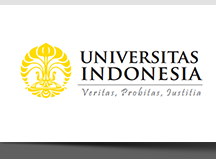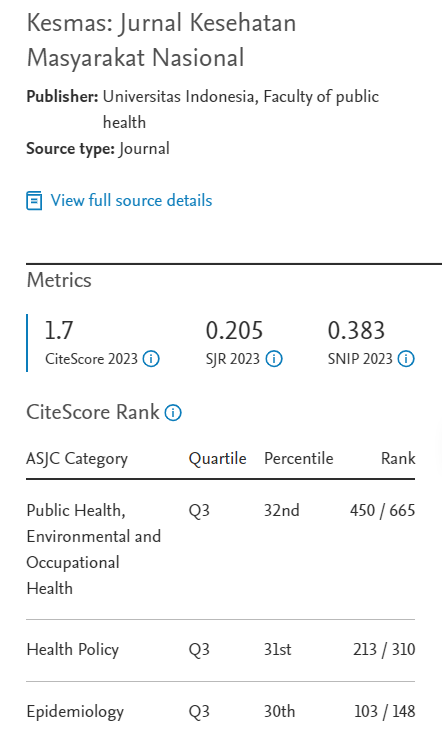Abstract
This study investigated the differences in ultra-processed food (UPF), fruit, vegetable, and total fat consumption in different aspects of social eating among urban young adults. This cross-sectional study used the 2018 Indonesian Food Barometer dataset with 180 participants aged 18–25 years living in urban areas from 6 provinces in Indonesia. The data on social eating (cooking habits, eating out, and eating alone), UPF, fruits, and vegetables were obtained from an extended 24-hour food recall interview. The Mann-Whitney U test (CI 95%) was employed for data analysis. This study found that groups with less frequent cooking habits tended to have more total energy intake, fat intake, and total energy from UPF (p-value
References
1. Nsabimana P, Sombié OO, Pauwels NS, et al. Association between urbanization and metabolic syndrome in low- and middle-income countries: A systematic review and meta-analysis. Nutr Metabol Cardiovasc Dis. 2024; 34 (2): 235-250. DOI: 10.1016/j.numecd.2023.07.040.
2. Colozza D, Wang Y-C, Avendano M. Does urbanisation lead to unhealthy diets? Longitudinal evidence from Indonesia. Health Place. 2023; 83: 103091. DOI: 10.1016/j.healthplace.2023.103091.
3. Kurniawan F, Manurung MD, Harbuwono DS, et al. Urbanization and unfavorable changes in metabolic profiles: A prospective cohort study of Indonesian young adults. Nutr. 2022; 14 (16): 3326. DOI: 10.3390/nu14163326.
4. Popkin BM, Corvalan C, Grummer-Strawn LM. Dynamics of the double burden of malnutrition and the changing nutrition reality. Lancet. 2020; 395 (10217): 65-74. DOI: 10.1016/S0140-6736(19)32497-3.
5. Monteiro CA, Cannon G, Lawrence M, et al. Ultra-processed foods, diet quality, and health using the NOVA classification system. Rome: Food and Agriculture Organization of the United Nations; 2019.
6. Baker P, Machado P, Santos T, et al. Ultra-processed foods and the nutrition transition: Global, regional and national trends, food systems transformations and political economy drivers. Obes Rev. 2020; 21 (12): e13126. DOI: 10.1111/obr.13126.
7. Zapata ME, Cediel G, Arrieta E, et al. Ultra-processed foods consumption and diet quality among preschool children and women of reproductive age from Argentina. Public Health Nutr. 2023; 26 (11): 2304-2313. DOI: 10.1017/S1368980022002543.
8. Hosseinpour-Niazi S, Malmir H, Mirmiran P, et al. Fruit and vegetable intake modifies the association between ultra-processed food and metabolic syndrome. Nutr Metabol. 2024; 21: 58. DOI: 10.1186/s12986-024-00831-x.
9. Martini D, Godos J, Bonaccio M, et al. Ultra-processed foods and nutritional dietary profile: A meta-analysis of nationally representative samples. Nutr. 2021; 13 (10): 3390. DOI: 10.3390/nu13103390.
10. Moojen R, Gillebaart M, de Ridder D. Correcting the misperceived social eating norm to dispel pluralistic ignorance and increase sustainable food choices: A field study. European J Health Commun. 2024; 5 (4): 77-93. DOI: 10.47368/ejhc.2024.404.
11. Cruwys T, Bevelander KE, Hermans RCJ. Social modeling of eating: A review of when and why social influence affects food intake and choice. Appet. 2015; 86: 3-18. DOI: 10.1016/j.appet.2014.08.035.
12. Herman CP, Polivy J, Pliner P, et al. Effects of social eating. In: Social Influence on Eating. Cham: Springer; 2019. DOI: 10.1007/978-3-030-28817-4_13.
13. Wellard-Cole L, Davies A, Allman-Farinelli, M. Contribution of foods prepared away from home to intakes of energy and nutrients of public health concern in adults: A systematic review. Critic rev food sci nutr. 2022; 62 (20): 5511-5522. DOI: 10.1080/10408398.2021.1887075.
14. Khusun H, Februhartanty J, Mognard E, et al. Indonesian Food Barometer: Food, cultures, and health. Jakarta: SEAMEO RECFON; 2022.
15. Febriana NL, Februhartanty J, Hanisa N, et al. Eating Behavior of Indonesian Adults Differs by Metropolization Levels based on the 2018 Indonesian Food Barometer. Med Gizi Indonesia Nat Nutr J. 2024; 19 (1): 1-10. DOI: 10.20473/mgi.v19i1.1-10.
16. Monteiro CA, Cannon G, Moubarac J-C, et al. The UN decade of nutrition, the NOVA food classification and the trouble with ultra-processing. Public Health Nutr. 2018; 21 (1): 5-17. DOI: 10.1017/S1368980017000234.
17. Kementerian Kesehatan Republik Indonesia. Peraturan Menteri Kesehatan Republik Indonesia Nomor 28 Tahun 2019 Tentang Angka Kecukupan Gizi yang Dianjurkan untuk Masyarakat Indonesia. Jakarta: Kementerian Kesehatan Republik Indonesia; 2019.
18. Khusun H, Anggraini R, Februhartanty J, et al. Breakfast consumption and quality of macro-and micronutrient intake in Indonesia: A study from the Indonesian food barometer. Nutr. 2023; 15 (17): 3792. DOI: 10.3390/nu15173792.
19. Larson N, Laska MN, Neumark-Sztainer D. Food insecurity, diet quality, home food availability, and health risk behaviors among emerging adults: Findings from the EAT 2010–2018 study. Am J Public Health. 2020; 110 (9): 1422-1428. DOI: 10.2105/AJPH.2020.305783.
20. Neufeld LM, Andrade EB, Suleiman AB, et al. Food choice in transition: Adolescent autonomy, agency, and the food environment. Lancet. 2022; 399 (10320): 185-197. DOI: 10.1016/S0140-6736(21)01687-1.
21. Vandevijvere S, De Ridder K, Fiolet T, et al. Consumption of ultra-processed food products and diet quality among children, adolescents and adults in Belgium. Eur J Nutr. 2019; 58 (8): 3267-3278. DOI: 10.1007/s00394-018-1870-3.
22. Ghosh-Jerath S, Khandpur N, Kumar G, et al. Mapping ultra-processed foods (UPFs) in India: A formative research study. BMC Public Health. 2024; 24: 2212. DOI: 10.1186/s12889-024-19624-1.
23. Calixto Andrade G, Julia C, Deschamps V, et al. Consumption of ultra-processed food and its association with sociodemographic characteristics and diet quality in a representative sample of French adults. Nutr. 2021; 13 (2): 682. DOI: 10.3390/nu13020682.
24. Marrón-Ponce JA, Sánchez-Pimienta TG, da Costa Louzada ML, et al. Energy contribution of NOVA food groups and sociodemographic determinants of ultra-processed food consumption in the Mexican population. Public Health Nutr. 2018; 21 (1): 87-93. DOI: 10.1017/S1368980017002129.
25. Polsky JY, Moubarac J-C, Garriguet D. Consumption of ultra-processed foods in Canada. Health Rep. 2020; 31 (11): 3-15. DOI: 10.25318/82-003-x202001100001-eng.
26. Harb AA, Shechter A, Koch PA, et al. Ultra-processed foods and the development of obesity in adults. European J Clin Nutr. 2023; 77: 619-627. DOI: 10.1038/s41430-022-01225-z.
27. Wolfson JA, Lahne J, Raj M, et al. Food agency in the United States: Associations with cooking behavior and dietary intake. Nutr. 2020; 12 (3): 877. DOI: 10.3390/nu12030877.
28. Wolfson JA, Leung CW, Richardson CR. More frequent cooking at home is associated with a higher Healthy Eating Index-2015 score. Public Health Nutr. 2020; 23 (13): 2384-2394. DOI: 10.1017/S1368980019003549.
29. Tani Y, Fujiwara T, Kondo K. Cooking skills related to potential benefits for dietary behaviors and weight status among older Japanese men and women: A cross-sectional study from the JAGES. Int J Behav Nutr Physic Act. 2020; 17: 82. DOI: 10.1186/s12966-020-00986-9.
30. Gesteiro E, García-Carro A, Aparicio-Ugarriza R, et al. Eating out of home: Influence on nutrition, health, and policies: A scoping review. Nutr. 2022; 14 (6): 1265. DOI: 10.3390/nu14061265.
31. Matsumoto M, Saito A, Okada C, et al. Consumption of meals prepared away from home is associated with inadequacy of dietary fiber, vitamin C, and mineral intake among Japanese adults: Analysis from the 2015 National health and nutrition survey. Nutr J. 2021; 20: 40. DOI: 10.1186/s12937-021-00693-6.
32. Hyldelund NB, Worck S, Olsen A. Convenience may increase vegetable intake among young consumers. Food Qual Pref. 2020; 83: 103925. DOI: 10.1016/j.foodqual.2020.103925.
33. Chung A, Vieira D, Donley T, et al. Adolescent peer influence on eating behaviors via social media: Scoping review. J Med Inter Res. 2021; 23 (6): e19697. DOI: 10.2196/19697.
34. Ahn Y, Lee Y, Park H, et al. Gender and age-group differences in nutrition intake and dietary quality of Korean adults eating alone: Based on Korean National Health and Nutrition Examination Survey Data, 2013–2016. Nutr Res Pract. 2021; 15 (1): 66-79. DOI: 10.4162/nrp.2021.15.1.66.
35. Mikami Y, Motokawa K, Shirobe M, et al. Relationship between eating alone and poor appetite using the simplified nutritional appetite questionnaire. Nutr. 2022; 14 (2): 337. DOI: 10.3390/nu14020337.
36. Lee EJ, Lee K-R, Kim J-Y. Analysis of differences in eating alone attitude of Koreans by dietary habits and age. Appet. 2020; 152: 104695. DOI: 10.1016/j.appet.2020.104695.
Recommended Citation
Arumsari I , Putri NA , Lathifah SN ,
et al.
Social Eating Role in Ultra-Processed Food Consumption Among Urban Young Adults: The 2018 Indonesian Food Barometer.
Kesmas.
2025;
20(2):
87-94
DOI: 10.7454/kesmas.v20i2.2134
Available at:
https://scholarhub.ui.ac.id/kesmas/vol20/iss2/1







